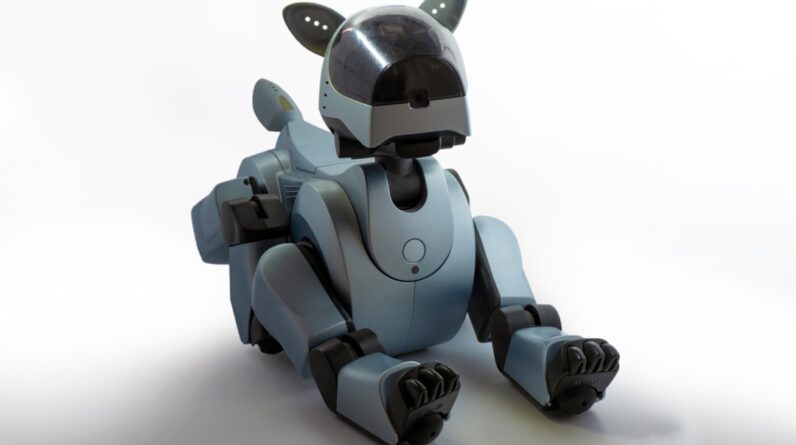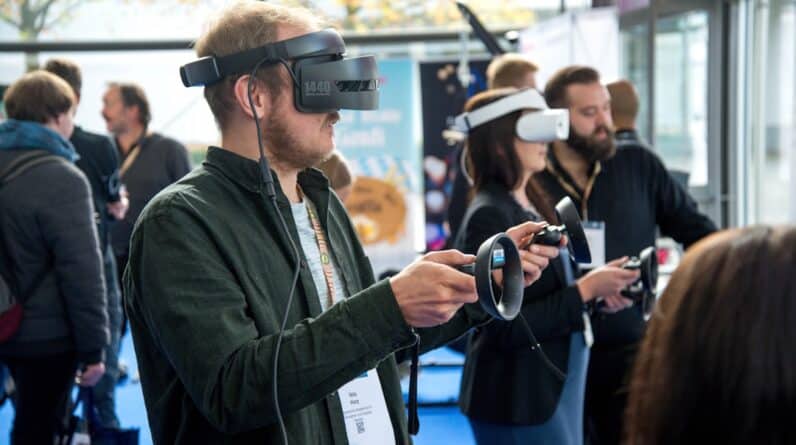Artificial Intelligence (AI) has become a transformative force in various sectors, reshaping how we interact with technology and the world around us. At the heart of this revolution lies computer vision, a field that enables machines to interpret and understand visual information from the world. You may have encountered computer vision in everyday applications, from facial recognition on your smartphone to advanced surveillance systems that monitor public spaces.
This technology allows computers to process images and videos, extracting meaningful data that can be used for a multitude of purposes. As you delve deeper into the realm of AI and computer vision, you will discover that these technologies are not just about mimicking human sight; they are about enhancing and augmenting our capabilities. By leveraging vast amounts of data and sophisticated algorithms, computer vision systems can analyze visual content with remarkable accuracy and speed.
This capability opens up new avenues for innovation, enabling businesses and researchers to solve complex problems and improve efficiency across various domains.
Key Takeaways
- AI and computer vision are revolutionizing the way machines perceive and interpret visual information.
- Image recognition plays a crucial role in AI by enabling machines to identify and categorize objects within images.
- Computer vision is advancing image recognition through the use of deep learning algorithms and neural networks.
- Image recognition has diverse applications across industries such as healthcare, retail, automotive, and agriculture.
- Despite its advancements, image recognition technology still faces challenges such as accuracy, privacy concerns, and bias, which need to be addressed for its widespread adoption.
The Role of Image Recognition in AI
Understanding Context and Making Informed Decisions
As you explore this field, you will find that image recognition is not just about identifying what is present in an image; it also involves understanding context and making informed decisions based on visual input. The significance of image recognition extends beyond mere identification. It plays a pivotal role in automating processes, enhancing user experiences, and driving insights from visual data.
Real-World Applications of Image Recognition
For instance, in retail, image recognition can analyze customer behavior by tracking how shoppers interact with products on shelves. This data can inform inventory management and marketing strategies, ultimately leading to improved sales and customer satisfaction.
The Power of Image Recognition in Unlocking Actionable Intelligence
As you engage with this technology, you will appreciate how image recognition serves as a bridge between raw visual data and actionable intelligence.
How Computer Vision is Advancing Image Recognition
Computer vision is continuously evolving, driven by advancements in machine learning and neural networks. You may have noticed that recent breakthroughs have significantly improved the accuracy and efficiency of image recognition systems. Techniques such as convolutional neural networks (CNNs) have revolutionized how machines process visual information, allowing them to learn hierarchical features from images.
This means that instead of relying solely on predefined rules, these systems can learn from vast amounts of data, adapting to new scenarios and improving over time. As you explore the advancements in computer vision, consider how these innovations are enabling real-time image recognition capabilities. For example, in autonomous vehicles, computer vision systems must quickly analyze their surroundings to make split-second decisions.
The ability to recognize pedestrians, traffic signs, and other vehicles is crucial for ensuring safety on the road. This real-time processing capability is made possible by powerful algorithms and high-performance computing resources, which allow machines to interpret complex visual environments with remarkable speed and precision.
Applications of Image Recognition in Various Industries
The applications of image recognition span a wide range of industries, each leveraging this technology to enhance operations and improve outcomes. In healthcare, for instance, image recognition is transforming diagnostics by enabling radiologists to detect anomalies in medical images more accurately. You might find it fascinating that AI algorithms can analyze X-rays, MRIs, and CT scans to identify conditions such as tumors or fractures, often with greater precision than human experts.
This not only speeds up the diagnostic process but also reduces the likelihood of errors. In the realm of security and surveillance, image recognition plays a vital role in enhancing safety measures. You may have seen how facial recognition technology is employed in airports and public spaces to identify individuals on watchlists or track suspicious behavior.
This application raises important questions about privacy and civil liberties but also highlights the potential for technology to improve public safety. As you consider these applications, it becomes clear that image recognition is not just a technological advancement; it is a tool that can significantly impact society.
Challenges and Limitations of Image Recognition Technology
Despite its many advantages, image recognition technology faces several challenges and limitations that must be addressed for it to reach its full potential. One significant issue is the reliance on large datasets for training machine learning models. You may be aware that obtaining high-quality labeled data can be time-consuming and expensive.
Moreover, biases present in training data can lead to skewed results, where certain demographics or scenarios are underrepresented or misrepresented in the model’s predictions. Another challenge lies in the variability of real-world conditions. Image recognition systems can struggle with variations in lighting, angles, or occlusions that may obscure objects in an image.
For instance, a model trained on clear images may falter when faced with low-light conditions or unusual perspectives. As you reflect on these limitations, it becomes evident that ongoing research and development are essential to enhance the robustness and reliability of image recognition systems.
The Future of Image Recognition: Trends and Innovations
Looking ahead, the future of image recognition is poised for exciting developments driven by emerging trends and innovations. One notable trend is the integration of image recognition with other AI technologies, such as natural language processing (NLP) and augmented reality (AR). Imagine a scenario where you can point your smartphone at an object, and the device not only recognizes it but also provides contextual information or interactive experiences through AR overlays.
This convergence of technologies promises to create more immersive and informative user experiences. Additionally, advancements in edge computing are set to revolutionize how image recognition operates. By processing data closer to the source—such as on devices rather than relying solely on cloud computing—image recognition systems can achieve faster response times and reduce latency.
This is particularly important for applications requiring real-time analysis, such as autonomous vehicles or smart surveillance systems. As you consider these trends, it becomes clear that the future of image recognition will be characterized by greater efficiency, interactivity, and integration with other technologies.
Ethical Considerations in AI and Image Recognition
As you navigate the landscape of AI and image recognition, it is crucial to engage with the ethical considerations surrounding these technologies. One pressing concern is privacy; the widespread use of facial recognition technology raises questions about surveillance and individual rights. You may find it unsettling that such systems can track individuals without their consent, leading to potential misuse by governments or corporations.
Striking a balance between security needs and personal privacy is an ongoing debate that requires careful consideration. Moreover, there are ethical implications related to bias in image recognition algorithms. If these systems are trained on datasets that reflect societal biases—whether related to race, gender, or socioeconomic status—they may perpetuate discrimination in their predictions.
As you reflect on these issues, it becomes evident that developers and policymakers must work collaboratively to establish guidelines that promote fairness and accountability in AI applications.
The Impact of AI and Computer Vision on Image Recognition
In conclusion, the intersection of AI and computer vision has profoundly impacted the field of image recognition, driving innovation across various industries while also presenting challenges that must be addressed. As you explore this dynamic landscape, you will appreciate how advancements in technology are reshaping our understanding of visual data and its potential applications. From healthcare diagnostics to security measures, image recognition is proving to be an invaluable tool that enhances efficiency and decision-making.
However, as you engage with these technologies, it is essential to remain mindful of the ethical considerations they entail. The future of image recognition holds great promise but also demands responsible stewardship to ensure that its benefits are realized equitably and ethically. By fostering a dialogue around these issues, you can contribute to shaping a future where AI serves as a force for good in society—enhancing our capabilities while respecting our rights and values.
One related article to AI and Computer Vision: the Future of Image Recognition is “Preserving Privacy in an AI-Driven World: Challenges and Solutions” which discusses the importance of protecting personal data in the age of artificial intelligence. To learn more about this topic, you can read the article here.
FAQs
What is AI and computer vision?
AI, or artificial intelligence, refers to the simulation of human intelligence in machines that are programmed to think and act like humans. Computer vision is a field of AI that enables computers to interpret and understand the visual world through digital images or videos.
How does AI and computer vision work in image recognition?
AI and computer vision work together to analyze and interpret visual data, such as images or videos, to recognize and identify objects, patterns, and even human emotions. This is achieved through the use of algorithms, deep learning, and neural networks.
What are the applications of AI and computer vision in image recognition?
AI and computer vision have a wide range of applications in image recognition, including facial recognition, object detection, medical imaging, autonomous vehicles, augmented reality, and quality control in manufacturing.
What are the benefits of AI and computer vision in image recognition?
The benefits of AI and computer vision in image recognition include improved accuracy and efficiency in identifying and analyzing visual data, enabling automation of tasks, enhancing security and surveillance, and advancing various industries such as healthcare, automotive, and retail.
What are the challenges of AI and computer vision in image recognition?
Challenges of AI and computer vision in image recognition include privacy concerns related to facial recognition technology, potential biases in algorithms, and the need for large amounts of labeled data for training models. Additionally, ensuring the ethical and responsible use of these technologies is an ongoing challenge.






